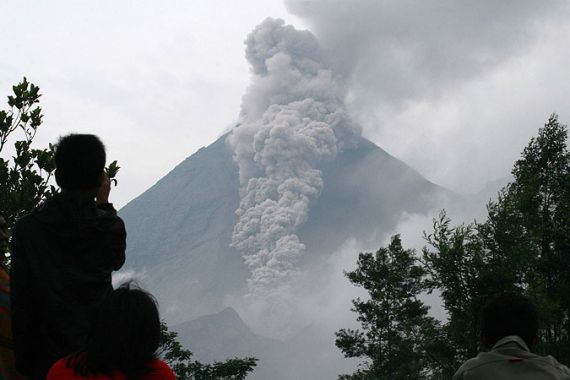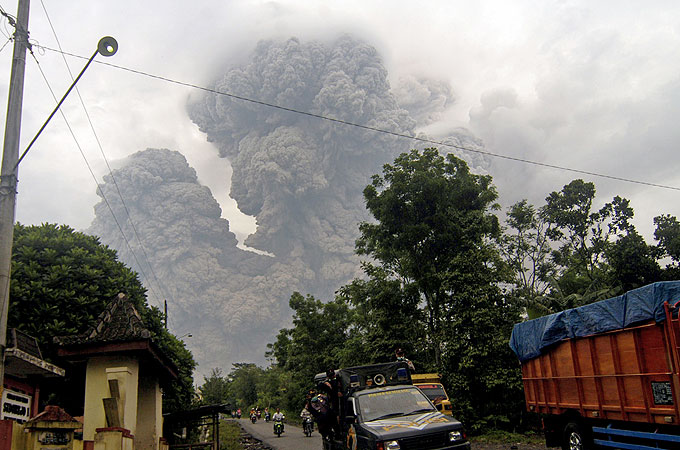Merapi eruption threat persists
Increased activity sends thousands fleeing just as another Indonesian volcano begins showing signs of eruption.

 |
| Mount Merapi’s latest eruption sent thousands of residents fleeing the surrounding villages on Sunday [EPA] |
An Indonesian volcano has unleashed more searing ash clouds, sending thousands of people who risked a trip home fleeing its slopes.
Officials said there were no deaths reported in Mount Merapi’s eruption on Sunday, which sent massive clouds of ash down the less-populated southern and eastern slopes.
Keep reading
list of 4 itemsAfter the Hurricane
World’s coral reefs face global bleaching crisis
Why is Germany maintaining economic ties with China?
Experts said the volcanic cloud flowed about 3.5km down the mountain’s southern side.
The 46-minute eruption sent dust about two kilometres into the air and a cloud of hot ash a kilometer down Merapi’s eastern and southern slopes.
Surono, the head of Indonesia’s Centre for Volcanology and Geological Hazard Mitigation, told Al Jazeera the hot clouds of gas and ash from Mount Merapi are the real threat this time.
“The mountain is very a dangerous volcano because the eruptions are followed by pyroclastic flow that can reach speeds of up to 1,300 kilometres per hour,” he said.
“A pyroclastic flow is volcanic material made up of sand and rock of different dimensions. It is extremely hot with temperatures that can reach up to 800 degrees Celcius, and a velocity of up to 300 kilometres per hour.”
Surono cautioned that heavy rain on Sunday increased the danger of another larger eruption because water falling into the fiery crater can create sudden vapour pressure in the lava dome.
Increasing activity
Nearly 40 people have been killed since Mount Merapi began erupting earlier this week.
Since Saturday’s large eruption, Merapi has had 63 lava bursts and nine small gas emissions, according to Subandrio, an official with the volcano’s monitoring agency.
“The trend seems to be that the volcanic activity is increasing.”
Authorities have been frustrated that many of the more than 53,000 evacuated since the eruptions began on Tuesday keep going back during the daylight hours, ignoring warnings of the danger.
More than 2,000 troops had to be called in on Saturday to force men, women and children to leave.
Bambang Ervan, a spokesman for the transportation ministry, said Sunday’s eruption forced the airport in the city of Solo, 40km east of Merapi, to close for at least an hour due to volcanic dust that fell like rain.
Pujobroto, a spokesman for the national carrier, Garuda Indonesia, said flights have been re-routed from the airport at Yogyakarta indefinitely out of concerns that the volcanic dust from the mountain about 30 km to the north would damage jet engines.
Amid these developments, another volcano has begun pushing clouds of ash and molten rock into the air, signalling an impending eruption.
Officials have raised the alert level for Anak Krakatau to “high”, and have issued warnings for people to stay away from the area.
The volcano was formed after the original Krakatoa blew itself apart in a catastrophic eruption in 1883.
Officials have also warned that two more volcanoes are threatening to erupt.
Mount Karangetang, on Siau island in North Sulawesi, and Mount Ibu, on Halmahera island in North Maluku, have had their alert level raised to standby, just one below a full eruption.
Indonesia is prone to earthquakes and eruptions as it straddles a series of fault lines and volcanoes known as the Pacific Ring of Fire.
The country – comprised of an archipelago of islands – has about 500 volcanoes, of which nearly 130 are active.